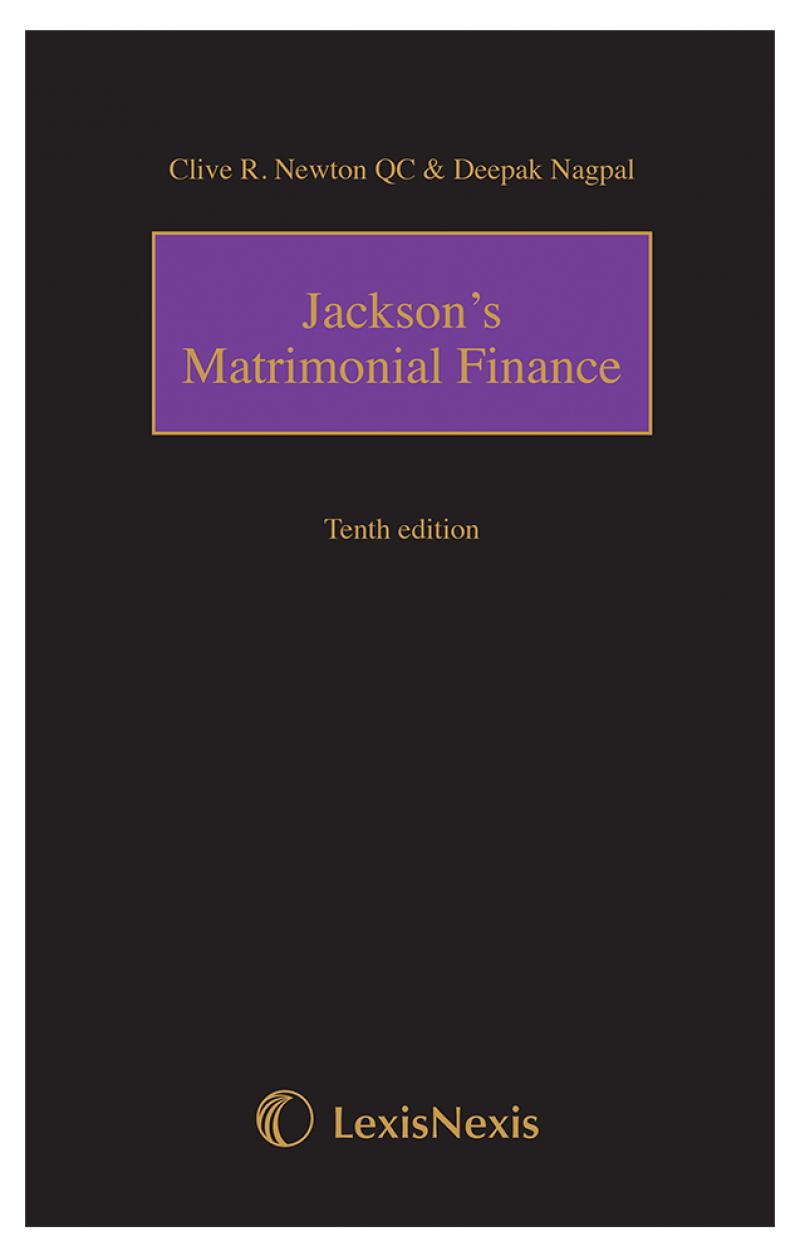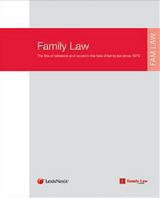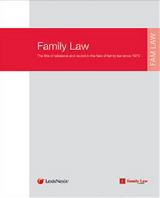- News & Comment
-
Online Shop
Online Services
Looseleafs
Law Reports
Books and eBooks
-
CPD & Events
Webinars
Events
- Authors
- About Family Law
- Contact












 11 FEB 2025
11 FEB 2025

 11 FEB 2025
11 FEB 2025

 11 FEB 2025
11 FEB 2025

 11 FEB 2025
11 FEB 2025

 11 FEB 2025
11 FEB 2025








Following discussions with the Association of District Judges, the editors of the Red Book and others, the President of the Family Division has revised his Guidance, which was originally issued in 2014. The Practice Guidance on the Duration of Ex Parte (Without Notice) Orders came into effect yesterday. It is essential reading for anyone who undertakes this work and who hears it.
Earlier this year figures from the Ministry of Justice confirmed that the number of non-molestation orders issued by the courts to protect people from harassment, intimidation or violence had increased by 21 per cent, from 4,925 to 6,101, between 2012 and 2014 in England and Wales.
This barely comes as a surprise, as following the introduction of the Legal Aid, Sentencing and Punishment of Offenders Act 2012 on 1 April 2013 the scope of services funded as part of civil legal aid radically changed. Legal aid in private law disputes has all but ceased which we know to our cost, save for where there are issues concerning domestic violence or child abuse and specific evidence fulfilling the requirements of regulation 33 or 34 of the Procedure Regulations is provided in support of this. As a consequence non-molestation orders are also the entry point for a legal application in Children Act proceedings.
A non-molestation application is usually an ex parte (without notice) application to the court. It had become the practice, and to a great extent I think it still is, that at that hearing the court would make non molestation orders for a period of up to one year or indeed unlimited periods and include a provision in the order for it to be 'considered at a further hearing on a date to be fixed by the court officer on request by the respondent'. The onus being on the respondent, to bring the matter back to court if they took issue.
This Guidance was originally issued on 13 October 2014. This revised Guidance, supersedes the previous Guidance.
The President made the following points in his Practice Guidance:
2 In expressing that view, the Magistrates’ Association and the National Bench Chairs’ Forum are entirely correct. To grant an ex parte (without notice) injunction for an unlimited time is wrong in principle. The practice of granting such orders for an unlimited time, if this is still occurring, must stop.
3 Subject only to paragraph 8, the same principles, as set out below, apply to all ex parte (without notice) injunctive orders made by the Family Court or by the Family Division, irrespective of the subject matter of the proceedings or the terms of the order.
4 The law is to be found in Horgan v Horgan [2002] EWCA Civ 1371, paras 5–6 (Ward LJ), R (Casey) v Restormel Borough Council [2007] EWHC 2554 (Admin), paras 37–41 (Munby J), In re C (A Child) (Family Proceedings: Practice) [2013] EWCA Civ 1412, [2014] 1 WLR 2182, [2014] 1 FLR 1239, para 15 (Ryder LJ) and Re A (A Child) [2016] EWCA Civ 572, [2016] 4 WLR 111, paras 49-61, esp paras 59-61 (Munby P).
5 The relevant principles, compliance with which is essential, are as follows:
(i) An ex parte (without notice) injunctive order must never be made without limit of time. There must be a fixed end date. It is not sufficient merely to specify a return day. The order must specify on its face and in clear terms precisely when it expires (eg, 12 noon on 20 March 2017).
(ii) The order must also fix a return day. The order must specify the date, time and place of the hearing on the return day. The return day should normally be no more than 14 days after the date when the order was made. How long the hearing on the return day should be listed for must be a matter for the discretion of the judge. However, having regard to paragraph 6, often a very short listing may well be appropriate.
(iii) Careful consideration needs to be given to the duration of any order made ex parte (without notice). Many orders will be of short duration, typically no more than 14 days. But in appropriate cases involving personal protection, such as non-molestation injunctions granted in accordance with Part IV of the Family Law Act 1996, the order itself can be for a longer period, such as 6 or even 12 months, provided that the order specifies a return day within no more than 14 days. This must be a matter for the discretion of the judge, but a period longer than 6 months is likely to be appropriate only where the allegation is of long term abuse or where some other good reason is shown. Conversely, a period shorter than 6 months may be appropriate in a case where there appears to be a one-off problem that may subside in weeks rather than months.
(iv) The order must make it clear that (a) it was made in the absence of the respondent and that the court has considered only the evidence of the applicant and (b) the court has made no finding of fact. Where the evidence is written, it must be identified in the order. Where, exceptionally, the court has received oral or other evidence (eg, a photograph) that evidence should be recorded on the face of the order or reduced to writing and served with the order.
(v) Where the order has been made in accordance with Part IV of the Family Law Act 1996 it must recite that the court has had regard to sections 45(1) and (2) of the Act.
(vi) The order (see FPR 18.10(3)) ‘must contain a statement of the right to make an application to set aside or vary the order under rule 18.11.’ The phrase ‘liberty to apply’ is not sufficient for this purpose. The order must spell out that the respondent is entitled, without waiting for the return day, to apply to set aside or vary the order.
(vii) If the respondent does apply to set aside or vary the order the court must list the application as a matter of urgency, within a matter of days at most.
6 Experience suggests that in certain types of case, for example, non-molestation or other orders granted in accordance with Part IV of the Family Law Act 1996, the respondent frequently neither applies to set aside or vary the order nor attends the hearing on the return day.
(i) When, in such cases, there is no attendance by the respondent and the order, having been served, does not require amendment there is no need for re-service. The order made on the return should however record that the respondent, although afforded the opportunity to be heard, has neither attended nor sought to be heard.
(ii) If, however, variation of the original order is sought by the applicant (eg by extending the ambit or the duration of the order) then:
(a) Paragraphs 5(i), (iii)-(v) must be complied with in relation to the new order and the new order will need to be served.
(b) Unless, before the return day, the respondent was given proper notice of the proposed amendments, either in the application or in the initial order, (a) the new order must specify a new return day, and (b) paragraph 5(ii) must be complied with in relation to the new order.
7 I remind all practitioners and judges of the principle, which applies to all ex parte (without notice) injunctive orders made by the Family Court or by the Family Division, irrespective of the subject matter of the proceedings or the terms of the order, that a without notice application will normally be appropriate only if:
(a) there is an emergency or other great urgency, so that it is impossible to give any notice, however short or informal, or
(b) there is a real risk that, if alerted to what is proposed, if 'tipped off', the respondent will take steps in advance of the hearing to thwart the court's order or otherwise to defeat the ends of justice. In an appropriate case this can justify the grant of a non-molestation injunction without notice, lest the respondent, having been served with an application, further molests his (or her) victim or exerts pressure on her (him) to abandon the proceedings.
8 Nothing in this Guidance derogates from, or otherwise modifies, the principles and safeguards to be observed on an application for an ex parte (without notice) freezing or search order: see L v K (Freezing Orders: Principles and Safeguards) [2013] EWHC 1735 (Fam), [2014] Fam 35.'
This is a very welcome re-clarificaiton of the principles in his 2014 Practice Guidance. There still appears to be much confusion as to whether Practice Guidance need to be complied with or not. There is considerable case law, which supports that they do. For a helpful discussion on this issue see Re W (Minors) [2016] EWHC 2226.
It would appear that the principle reason for this latest Practice Guidance is as a result of wholesale misunderstanding or non-compliance of the 2014 Practice Guidance. It will be interesting to see whether both practitioners and the judiciary comply with this.




Leave a commentOrder by
Newest on top Oldest on top